A wealth of online resources exists to help technical documentation teams adapt their output for international customers, focusing on the planning, tools, and steps needed to successfully translate and localize content.
However, while getting this process right is critical to global customer success, it’s part of a larger content cycle – one that starts with the original ‘source’ content and the language in which it is created.
For many international companies, a disconnect exists between document creation by technical authors and designers and the subsequent adaptation of this content – a potential misalignment of communication, workflows, tools, and budget.
This disconnect can lead, among other things, to duplication of effort, inefficient workflows, missed deadlines, plenty of late nights and headache, and – critically – inflated costs. To help global businesses close the gap, we’ve prepared this guide to share some best practices for creating localization-ready technical documentation for an international customer base. We’ll look at how to design, manage and execute a document internationalization strategy that helps content flow seamlessly through the subsequent adaptation steps. Building product technical documentation for a global audience?
If you don't have the time to read more now, click the button below and download the e-book for later.
Internationalization (often abbreviated to ‘i18n’ to save on the 18 characters between the ‘i’ and the ‘n’) refers to the process of creating products and content that can be adapted to new regions and languages without significant redesign or restructuring of the original. It involves tracing the localization journey downstream from the creation point and anticipating any obstacles or complications that will be encountered when translating or adapting the content for new locales. Then, from this base, working back upstream to create new processes or implement new technology and practices in the creation process which will simplify and accelerate the workflow later down the line.
In the world of technical product design (especially software and digital products), internationalization has many technical components relating to the way products are built – the code which produces a slick original web application, for example, may not bend itself easily to being adapted into other languages. In this arena, internationalization is a vital part of the product cycle from the outset, and the adoption of ‘localization friendly’ design practices has been widespread across global tech companies in recent years. But internationalization isn’t just for software or apps. It applies to documentation and user instructions too, and adopting an approach to technical content creation that keeps later language adaptation in the view from the beginning has an upside for all involved.
When compared with physical or digital product adaptation, the opinion can prevail within companies that document localization is a straightforward process. Instead of needing to ensure that every window, button, dropdown, and screen of a digital program works across a range of languages, when it comes to user help, technical manuals and other support documents, the translation for international users can seem significantly less complex. As a result, less time and energy get dedicated to the ‘localization readiness’ phase, and source-language documentation is generated with little or no thought as to how it will be converted into an end format that looks and feels native to the target user markets. This absence of an effective internationalization strategy can have a huge impact, both on the cost and speed of product rollout or release.
Among the potential complications of overlooking internationalization considerations are:
A lot of stress, cost, and late-night shifts can be avoided by adopting a more structured approach to technical document creation.
A solid internationalization strategy helps everyone involved in the content cycle - from authoring and design teams to marketing, product management, and both in-house and third-party language specialists – working as a single production unit. As well as keeping teams and individuals happy, there are also major advantages for the business in terms of final products and the financial results they generate. Supported by a wealth of experience in terms of translation projects in the field of technical documentation, we have put together some of the key wins (for people and companies) of a robust document internationalization process:
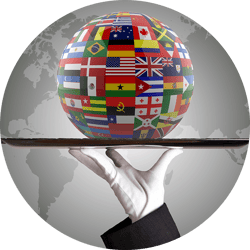
The most significant upshot of effective internationalization is that content can be adapted faster and more cost-effectively for other language groups. Internationalized source content that has anticipated and accommodated translation needs flows smoothly into the localization workflow, providing language teams not only with formats that are readily adaptable for foreign-language content but with accompanying information and context that pre-empts likely questions or queries. A focus on easy-to-localize content creation often results in a lower overall word count and reduced variation in vocabulary – both factors which create efficiencies and savings in the translation process. Put together, this results in less time spent translating fewer words with less back and forth, reducing both the time and cost of localization efforts.
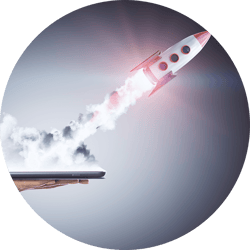
Technical writers already have challenging and complex roles, even before localization needs are added to the mix. Most documentation they create has to meet the contrasting needs of a wide group of stakeholders, often including product, sales, marketing and legal teams – each demanding something slightly different from the content. Add to that the potential slowdown when documentation goes through the translation process, and hold-ups can quickly affect business-critical targets to ship products and release version updates. With technical documentation playing such a central role in product rollout, the acceleration of the source creation and localization cycle helps companies meet ambitious growth objectives and deliver to international markets on time.

Adherence to a codified set of language guidelines, such as technical glossaries or style guides, are standard best practices in document creation with or without localization – especially where multiple authors are contributing to a large content base. But an emphasis on keeping original (‘source’) content linguistically consistent with translation in mind has a cyclical effect - the more documentation teams focus on creating simple, homogenous content that can be readily translated, the stronger the tone and brand consistency will be in both source and translated versions.
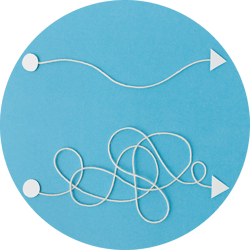
Creating ‘translation ready’ content usually means finding the simplest way to say things. This means avoiding complex grammatical structures, sub-clauses and other clunky syntax elements and focusing on clean, direct communication. The upshot of this is a more readable document overall, for customers in any region.

A structured internationalization process doesn’t just make it easier and faster to produce new global content, it lays the foundations for quicker and simpler updating or maintenance of existing content bases. By applying the same principles that smooth the transition from source creation to translation, authoring teams create a framework which makes it easier to update previous content versions, add new authors to the creation process, or accelerate the release of any new content which recycles sections from existing archives.
Getting internationalization right relies on three main elements, each of which guides the development and implementation of best practices. Building an internationalization process around these three ‘pillars’ ensures that individuals, teams and external resources can collaborate effectively on technical content creation projects fluidly and keep in line with budgets and timelines.
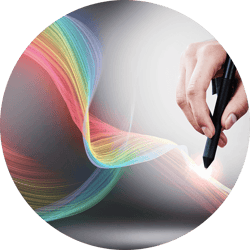
‘Writing for translation’ is an approach to content creation that visualizes the international user base at all times. This means making hundreds of stylistic decisions throughout a document with awareness of how they will impact the teams of linguists who will work on the content at a later phase to prepare it for new-language audiences. These decisions can include word choice, syntax, use of symbols, references, structure and presentation of information, and even paragraph titles or section headings. There are a range of techniques (some discussed below) which can help authors to write directly and precisely, minimising the possibility of ambiguity or mistranslation by linguists. Once a consistent, ‘universal’ style has been developed, it should be hard-coded into a style guide for use across the business – making sure that any contributors to documentation abide by the same rules and create content with a similar level of translation readiness.

Most technical documentation is a combination of text and visual elements. As documents are adapted for new languages, translators and graphic designers work to create localized versions which mirror the original as closely as possible – but this can involve some considerable work. Languages do not all take up the same space on the page to say the same thing, some read from left to right, some from right to left. Symbolic imagery or use of colour may not have equivalent meaning in international markets. Graphics with embedded text (such as screen captures) may not be replicable in target languages without significant extra work and cost. When approaching design, teams should focus on creating flexible basic layouts that can be easily adjusted to accommodate the reshaping necessary when converting between languages.

Specialized software can play an extremely valuable role in structuring attempts to create translation-ready documentation. In addition to tools purpose-built for technical document creation (authoring platforms such as MadCap, Quark or Adobe RoboHelp, WYSIWYG editors and content management systems including Opentext, Alfresco, IBM and Box), writers can leverage a range of systems to better facilitate the translation of their source content. Digital Asset Management platforms (DAM, such as Adobe Experience Manager, Aprimo and Nuxeo Studio) can help localization teams find and contextualize files and graphics, while glossaries and terminology bases allow global content teams to build up highly structured guides to content language.
Consolidating the benefits of these tools are Translation Memory (TM, including memoQ, Memsource, and Trados) systems, used by translators to identify words or sections of previously translated content. Since translation services are priced around the translation of new or previously untranslated content, by reducing vocabulary variance, re-using content segments and aligning the whole process with a powerful TM platform, costs for overall localization can be radically reduced – to say nothing of the time savings gained. By way of example, when one of the largest global music and pro audio companies in the world prepared to engage a translation agency to localize their content, their first move was to purchase a Trados Studio license involved in the translation process and equip every technical writer with the latest version of InDesign. The result? A standardized authoring process built on two compatible, localization-friendly tools.
With the theory in place, here are 15 actionable tips to help build an improved process for international documentation creation.
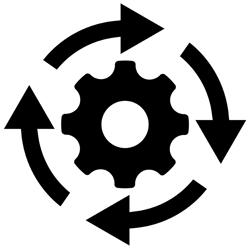
Producing technical documentation ready for rapid, efficient localization usually requires co-ordinated contribution from different teams and departments. Authors need to be in synch regarding usage and updating of resource documents to ensure language and stylistic consistency. Designers need to adhere to parameters and best practices affecting their role in the cycle. Revision and sign-off processes need to be mapped out and deadlines set against key project milestones.
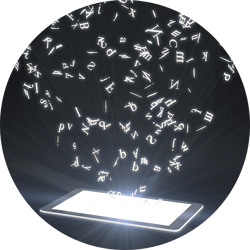
Though time-consuming to produce, glossaries and terminology databases create a resource that delivers a return over and over again. These reference documents help teams of in-house, third-party or freelance writers keep consistent in their use of technical terms, abbreviations, company-specific language and stylistic conventions.
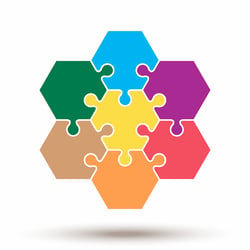
One of the crucial disconnects that occurs between writing and translation teams is that vital product or contextual information is lacking when translators come to adapt the source text. Including product information, diagrams (even when they have no translatable context) and even marketing collateral can help translators understand the documents they’re working with, enabling them to make better decisions with potentially ambiguous or unclear translation scenarios.
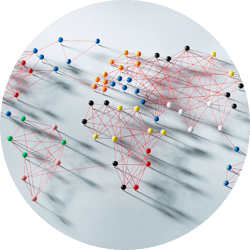
If documentation contains content unique to the country of origin, this should be clearly demarcated for localization teams, with instructions on how to handle it. Product warranties, legal disclaimers, support contact information or regulatory content may not be suitable for simple translation into other languages and may require more complex adaptation. Ensuring any content which falls into this category is visibly noted helps localization teams plan accordingly.
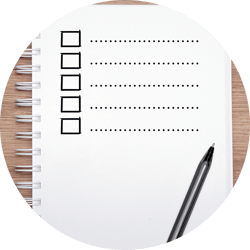
Acronyms are notorious for causing translation headaches and should ideally be avoided wherever possible!
If they are inevitable, creating a list to be provided as an appendix to documentation can be a valuable reference tool for translation teams, helping break out the individual meanings and provide a better basis for re-creating acronyms in other languages if needed.
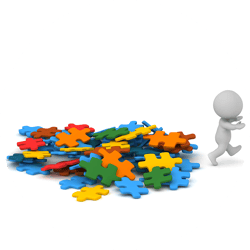
Sentences which lack articles and full parts of speech can be difficult for translators to interpret or translate accurately. Wherever possible, creating a complete sentence with subject, verb and object avoids confusion and leads to a speedier translation output.
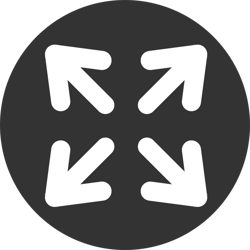
Most languages take up more space on the page than English, with some requiring 30-50% more space (including common European languages). Asian languages, on the other hand, can be more concise. Document layout, including tables, columns and other features should have built-in flexibility to expand or contract, without overflowing page margins, page breaks or pushing other content out of design parameters. The same should be considered for captions and instructions for diagrams, screenshots and other visuals.

Companies which produce large volumes of documentation often use templates that include scripts to ensure consistent formatting and branding. However, coded formatting instructions can cause issues with translating into other languages. For example, formatting scripts that automatically capitalize words in certain positions may create issues for languages which use capitalization differently from English.

Translation vendors usually base the majority of project quotes and costs on word count. Concise language and simple sentence structure not only create documents that are easier to read, they also cost less to translate than wordier versions.

Slang and informal use of language can be a minefield for adaptation into other cultures, and without highly nuanced context translators can make mistakes, misinterpret intent and even cause unintentional offense. Even where corporate tone of voice is friendly, engaging and relaxed, it still pays to keep language standardized and free of colloquialisms.

Piling up long lists of adjectives or modifiers before a noun can lead to serious ambiguity during the translation process. This means phrases such as “dual direction rubber anti-lock moisture valve” which contain a string of adjectives before the final noun. Not only is understanding these dense phrases tricky for non-native speakers, recreating them in foreign languages within the same overall syntax structure and wordcount can be next to impossible.

Most languages have general-purpose verbs which can be very vague in isolation. In English, words like “get” are the primary culprits, capable of meaning hundreds of different things. In Spanish, verbs like “echar” have a similar role to play. Replacing “get to the end” with “finish”, for example, helps keep meaning and translation simpler. The same is true of phrasal verbs – “back up”, “come apart” and “get started” all have single-verb equivalents that can minimise confusion and error.
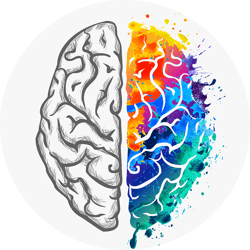
Text embedded with graphics triggers an entire re-design of the graphic element, with translation, localization and desktop publishing all needing to be managed separately. In image-heavy documents this can cause a huge spike in total project costs. Creating graphic-linked text as an element in the main text document (as opposed to a layer in a vector or compound graphic file, such as EPS, AI or SVG) helps keep text content easily accessible and translatable.
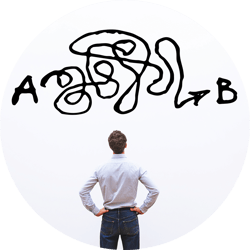
Sticking to regular, common-use fonts helps stave off a range of potential problems. From foreign-language characters to accents, the more niche or ornate a typeface is, the higher the likelihood it will cause localization issues at some stage. Using custom or highly stylised fonts can render translated text illegible in certain cases or require extensive workarounds to reproduce brand feel in the event that certain languages or characters are not supported.
.png?width=250&height=250&name=ATL_9%20(1).png)
Not only do short paragraphs and sentences convey meaning more effectively, but they also save significant budgets in a per-word translation environment. Intro paragraphs that prepare readers for what’s ahead in a document or excessive recap sections and contents lists all combine to lengthen content without necessarily adding value for the reader. Unless there’s a specific reason not to, keeping it short and simple works out best.
+1 857 777 5741 ext. 203 (business inquiries)
+1 857 777 5741 ext. 205 (career inquiries)
Trylinskiego 16, 10-683
Olsztyn, Poland
Copyright ATL 2025. All Rights Reserved.